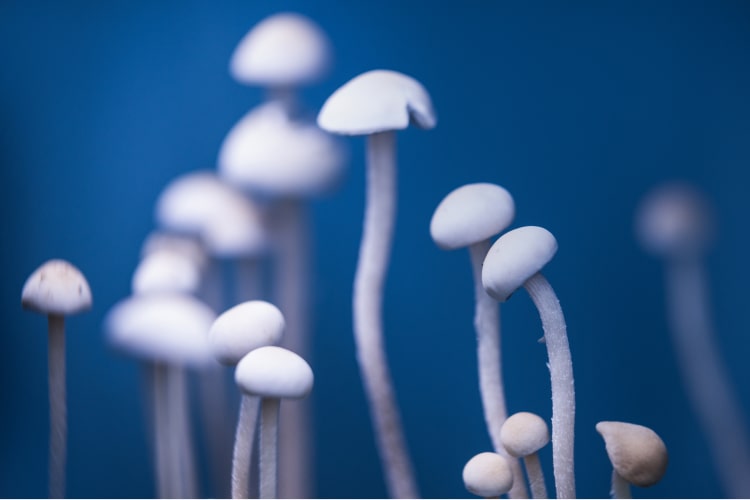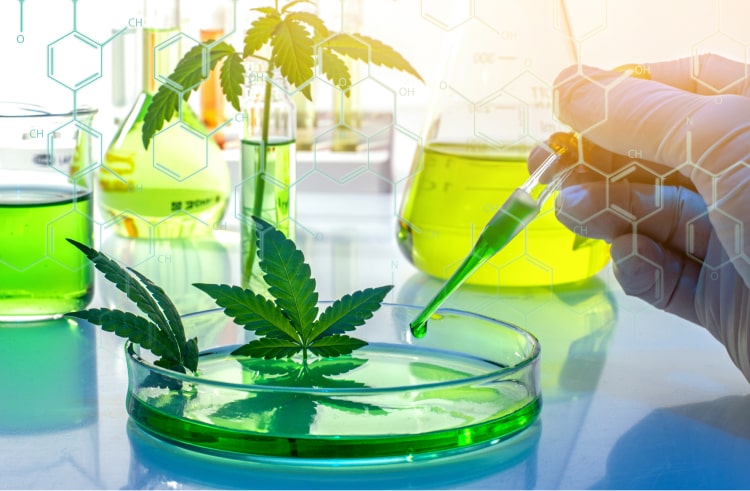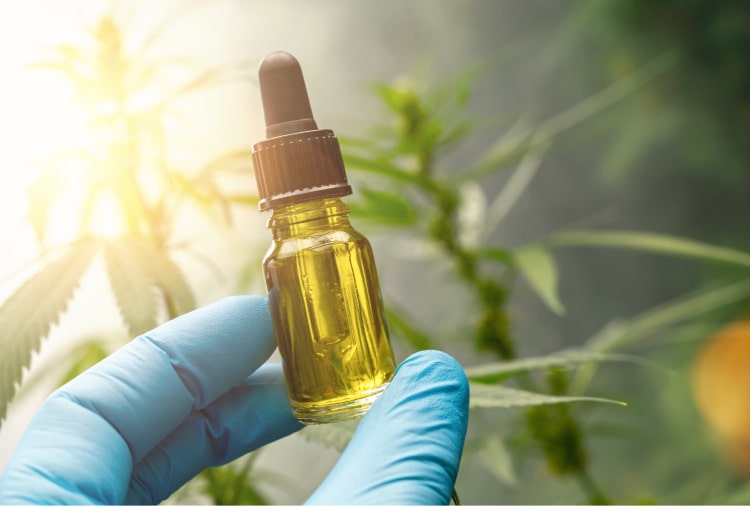The Science of Psilocybin-Assisted Psychotherapy

A Historical Perspective
Psilocybin-containing mushrooms, colloquially known as “magic mushrooms,” have a rich history of use that spans several millennia1. Indigenous cultures, particularly in Mesoamerica regions like Mexico and Guatemala, have revered these mushrooms for their potent psychoactive properties. The Mazatec, Mixtec, Zapotec, and Aztec peoples are among the notable cultures that have utilized these mushrooms in their religious and shamanic rituals 1,2 . These practices, believed to have started as early as 1000-500 BCE, were deeply spiritual in nature2. The mushrooms were consumed during ceremonies to induce visions, which were interpreted as messages from the gods or ancestral spirits. These visions were believed to provide guidance, insights, and healing. The mushrooms were often used to diagnose illnesses, predict the future, or communicate with the spiritual realm 1.
The modern scientific exploration of psilocybin began in the 1950s when Dr. Albert Hofmann, who also discovered LSD, isolated and named the compound3. The 1960s and early 1970s saw a surge in research interest, with over 1,000 clinical papers being published4. However, the global “War on Drugs” in the 1970s, which classified psilocybin as a Schedule I substance, severely restricted its research. This classification deemed the compound as having a high potential for abuse and no accepted medical use.
The 21st-century renaissance in psilocybin research can be traced back to the early 2000s. Institutions like Johns Hopkins University and Imperial College London have been at the forefront 5,6,7. Dr. Roland Griffiths at Johns Hopkins and Dr. Robin Carhart-Harris at Imperial College are among the notable scientists pioneering this resurgence. Their work, along with that of other researchers, has reignited interest in the therapeutic potential of psilocybin, leading to its current consideration for medical applications 8. Numerous trials have since emerged exploring the therapeutic efficacy of psilocybin for conditions like major depressive disorder, anxiety associated with terminal illness, and addiction disorders,
among others 5-7,9-11.


Therapeutic Applications
- Depression: In a 2020 study published in JAMA Psychiatry, a randomized controlled trial found that two doses of psilocybin, combined with supportive psychotherapy, produced rapid and significant antidepressant effects. The Hamilton Depression Rating Scale (HAM-D) was used to measure outcomes, with the psilocybin group showing a significant reduction in scores5.
- End-of-life anxiety: A 2016 double-blind study published in the Journal of Psychopharmacology found that a single dose of psilocybin significantly reduced existential anxiety and depression in patients with life-threatening cancer diagnoses, with effects lasting at least six months6.
- Substance use disorders: A pilot study in 2015 found that psilocybin, when paired with cognitive-behavioral therapy, significantly reduced smoking over a 12-month period5.
- Obsessive-Compulsive Disorder (OCD): Preliminary findings from 2006 suggest a dose-dependent reduction in OCD symptoms post-psilocybin administration10,12.
- Post-Traumatic Stress Disorder (PTSD): With current therapies, a significant portion of individuals with PTSD do not achieve remission28. Psilocybin-assisted psychotherapy is emerging as a promising intervention for PTSD. Preliminary studies and anecdotal reports suggest that psilocybin may help alleviate PTSD symptoms by facilitating emotional processing of traumatic memories, enhancing fear extinction, and promoting cognitive flexibility13. During psilocybin sessions, patients might revisit traumatic memories in a supportive setting, potentially leading to a recontextualization or “reconsolidation” of these memories. The therapeutic context, involving preparatory sessions, the drug-assisted session, and integrative follow-up sessions, allows for the safe exploration and processing of traumatic content14. Moreover, the often-reported mystical or spiritual experiences during psilocybin sessions might contribute to its therapeutic efficacy in PTSD. These experiences, characterized by feelings of interconnectedness, transcendence, and insights into one’s life, can foster a sense of meaning, promote acceptance, and provide a new perspective on past traumas15. While the potential of psilocybin for PTSD treatment is promising, rigorous randomized controlled trials are essential to confirm its safety and efficacy. It is also crucial to note that the therapeutic effects of psilocybin in PTSD, as with other eligible conditions, are thought to be a synergy between the pharmacological effects of psilocybin and the psychotherapeutic support provided before, during, and after the sessions22.
Pharmacology and Mechanism of Action
Upon ingestion, psilocybin is rapidly dephosphorylated in the liver to its active form, psilocin8,12. Psilocin primarily targets the serotonin 5-HT2A receptor, leading to an altered serotonin transmission (Vollenweider et al., 1998). This alteration in serotonin transmission is believed to be responsible for the compound’s hallucinogenic effects16. Additionally, its impact on the brain’s neural plasticity, leading to changes in mood, cognition, and perception, has also been highlighted17. While psilocin is the primary active metabolite, other minor metabolites are produced, though their psychoactive properties are less understood12 and are not believed to be toxic8.
The brain’s default mode network (DMN) plays a pivotal role in self-referential thoughts, daydreaming, and the sense of ego. Psilocybin has been shown to decrease activity and connectivity in the DMN18. This disruption is thought to underlie the experiences of ego dissolution, where one’s sense of self becomes blurred or completely disappears19. This altered connectivity might have therapeutic implications, especially for conditions characterized by rigid and harmful thought patterns, such as depression and certain anxiety disorders20.
Dosing and Administration
The dosing of psilocybin in clinical settings varies based on the therapeutic goal and the individual’s body weight. Typically, doses range from low (around 5-10 mg) to moderate/high (20-30 mg or more).21 The number of sessions, time between sessions, and other relevant dosing information are areas of ongoing research. Some protocols involve preparatory sessions without the drug, followed by one or more sessions with the drug, and then integration sessions to help process the experience 22 . It is also imperative to note that set (mindset) and setting (environment) play a crucial role in influencing the outcome of a psilocybin session, and this has been historically documented as well23.
Potential Side Effects
- Acute: Nausea, vomiting, increased heart rate, increased blood pressure, and transient anxiety or paranoia.
- Psychological: The potential for challenging or distressing experiences during the trip, which can be mitigated with proper set (mindset), setting (environment), and guidance from trained therapists.
- Note: There’s a low potential for addiction, and no known overdose deaths directly attributable to psilocybin.
Gaps in the Current Literature
While the therapeutic potential of psilocybin is promising, several gaps remain. The long-term effects of psilocybin, especially with repeated use, are not well-understood24. Many studies have strict inclusion criteria, which may limit the generalizability of the results25. Comparative studies are needed to determine how psilocybin therapy stacks up against existing treatments26. Additionally, more research is required to establish standardized dosing protocols and to understand the potential risks associated with different dosing regimens. These gaps present challenges for the widespread clinical adoption of psilocybin. Addressing them requires rigorous, large-scale, long-term studies that can provide a clearer picture of psilocybin’s safety and efficacy21,27.
Conclusion
The resurgence of interest in psilocybin-assisted psychotherapy is a testament to the compound’s potential therapeutic benefits8. From its ancient use in shamanic rituals to its modern application in clinical settings, psilocybin has journeyed through time, revealing its profound effects on the human psyche. As research continues to unfold, it is crucial to address the existing gaps in our understanding and to approach this field with both curiosity and caution22. The promise of psilocybin therapy could revolutionize mental health treatment, offering hope to those for whom traditional therapies have fallen short9.
References:
- Guzmán, G. (2008). Hallucinogenic mushrooms in Mexico: An overview. Economic Botany, 62(3), 404-412.
- Sanchez-Leon, E. (2018). Ethnomycology of Psychoactive Mushrooms. Encyclopedia of Mycology, 1(1), 223-239.
- Hofmann, A., Heim, R., Brack, A., & Kobel, H. (1958). Psilocybin, a psychotropic substance from the Mexican mushroom Psilocybe mexicana Heim. Experientia, 14(3), 107-109.
- Sessa, B. (2005). Can psychedelics have a role in psychiatry once again? The British Journal of Psychiatry, 186(6), 457-458.
- Davis, A. K., Barrett, F. S., & Griffiths, R. R. (2020). Effects of Psilocybin-Assisted Therapy on Major Depressive Disorder. JAMA Psychiatry, 78(5), 481–489.
- Griffiths, R. R., Johnson, M. W., Carducci, M. A., et al. (2016). Psilocybin produces substantial and sustained decreases in depression and anxiety in patients with life-threatening cancer: A randomized double-blind trial. Journal of Psychopharmacology, 30(12), 1181-1197.
- Carhart-Harris, R. L., Bolstridge, M., Rucker, J., Day, C. M. J., Erritzoe, D., Kaelen, M., … & Taylor, D. (2016). Psilocybin with psychological support for treatment-resistant depression: an open-label feasibility study. The Lancet Psychiatry, 3(7), 619-627.
- Nichols, D. E. (2016). Psychedelics. Pharmacological Reviews, 68(2), 264-355.
- Ross, S., Bossis, A., Guss, J., et al. (2016). Rapid and sustained symptom reduction following psilocybin treatment for anxiety and depression in patients with life-threatening cancer: A randomized controlled trial. Journal of Psychopharmacology, 30(12), 1165-1180.
- Johnson, M. W., Garcia-Romeu, A., & Griffiths, R. R. (2015). Long-term follow-up of psilocybin-facilitated smoking cessation. Journal of Psychopharmacology, 30(1), 27-34.
- Moreno, F. A., Wiegand, C. B., Taitano, E. K., & Delgado, P. L. (2006). Safety, tolerability, and efficacy of psilocybin in 9 patients with obsessive-compulsive disorder. Journal of Clinical Psychiatry, 67(11), 1735-1740.
- Passie, T., Seifert, J., Schneider, U., & Emrich, H. M. (2002). The pharmacology of psilocybin. Addiction Biology, 7(4), 357–364.
- Sloshower, J. (2018). Psychedelic medicine for mental illness and substance use disorders: Overcoming social and legal obstacles. Neurotherapeutics, 15(3), 520-525.
- Nielson, J. L., & Megler, J. D. (2014). Ayahuasca as a candidate therapy for PTSD. In The therapeutic use of ayahuasca (pp. 41-58). Springer, Berlin, Heidelberg.
- Griffiths, R. R., Johnson, M. W., Richards, W. A., Richards, B. D., & Jesse, R. (2011). Psilocybin occasioned mystical-type experiences: immediate and persisting dose-related effects. Psychopharmacology, 218(4), 649-665.
- Tylš, F., Páleníček, T., & Horáček, J. (2014). Psilocybin—Summary of knowledge and new perspectives. European Neuropsychopharmacology, 24(3), 342-356.
- Ly, C., Greb, A. C., Cameron, L. P., Wong, J. M., Barragan, E. V., Wilson, P. C., … & Duim, W. C. (2018). Psychedelics Promote Structural and Functional Neural Plasticity. Cell Reports, 23(11), 3170-3182.
- Carhart-Harris, R. L., Erritzoe, D., Williams, T., et al. (2012). Neural correlates of the psychedelic state as determined by fMRI studies with psilocybin. Proceedings of the National Academy of Sciences, 109(6), 2138-2143.
- Millière, R., Carhart-Harris, R. L., Roseman, L., Trautwein, F. M., & Berkovich-Ohana, A. (2018). Psychedelics, Meditation, and Self-Consciousness. Frontiers in Psychology, 9, 1475.
- Carhart-Harris, R. L., & Goodwin, G. M. (2017). The therapeutic potential of psychedelic drugs: Past, present, and future. Neuropsychopharmacology, 42(11), 2105-2113.
- Johnson, M. W., Griffiths, R. R., Hendricks, P. S., & Henningfield, J. E. (2018). The abuse potential of medical psilocybin according to the 8 factors of the Controlled Substances Act. Neuropharmacology, 142, 143-166.
- Johnson, M. W., Richards, W. A., & Griffiths, R. R. (2008). Human hallucinogen research: guidelines for safety. Journal of Psychopharmacology, 22(6), 603-620.
- Leary, T., Metzner, R., & Alpert, R. (1963). The Psychedelic Experience: A manual based on the Tibetan Book of the Dead. New York: Citadel Press.
- Carbonaro, T. M., Bradstreet, M. P., Barrett, F. S., MacLean, K. A., Jesse, R., Johnson, M. W., & Griffiths, R. R. (2016). Survey study of challenging experiences after ingesting psilocybin mushrooms: Acute and enduring positive and negative consequences. Journal of Psychopharmacology, 30(12), 1268–1278.
- Swanson, L. R. (2018). Unifying theories of psychedelic drug effects. Frontiers in Pharmacology, 9, 172.
- Muttoni, S., Ardissino, M., & John, C. (2019). Classical psychedelics for the treatment of depression and anxiety: A systematic review. Journal of Affective Disorders.
- Nutt, D. J., & Carhart-Harris, R. L. (2021). The current status of psychedelics in psychiatry. JAMA Psychiatry, 78(2), 121-122.
- Steenkamp, M. M., Litz, B. T., Hoge, C. W., & Marmar, C. R. (2015). Psychotherapy for military-related PTSD: A review of randomized clinical trials. JAMA, 314(5), 489-500.

